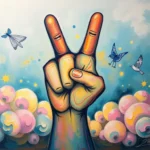
Have you ever woken up from a dream, heart racing, with vivid images swirling in your mind? Perhaps you’ve found yourself in a fantastical world where the ordinary rules of reality don’t seem to apply. Dreams can be both enchanting and bewildering, offering glimpses into our subconscious and revealing hidden truths about our lives. Like a seasoned traveler navigating through a labyrinth, understanding the symbols within our dreams can illuminate the path to self-discovery and personal growth.
In this article, we’ll embark on a journey through the intricate landscape of dream symbols. We’ll explore their meanings, delve into relatable scenarios, and uncover how these nighttime narratives can empower us in our waking lives. So, grab a cup of tea, settle into your favorite chair, and let’s dive into the fascinating world of dreams together.
Whispers of the Night: Decoding Dream Symbols
Dreams are a rich tapestry woven from our thoughts, feelings, and experiences. At their core, symbols serve as a language through which our subconscious communicates. Whether it’s a recurring theme or an unusual image, each element within a dream can hold significant meaning.
For instance, water often symbolizes emotions. A calm lake might represent tranquility, while a turbulent ocean could indicate feelings of chaos. Similarly, flying can symbolize freedom and empowerment, suggesting a desire to rise above challenges. The presence of animals often connects to instincts; a lion may evoke courage, while a snake might represent hidden fears or transformation.
From a psychological perspective, Carl Jung emphasized the importance of archetypes—universal symbols that resonate across cultures. Cultural context also plays a vital role in interpretation. In some cultures, snakes are seen as symbols of rebirth, while in others, they may invoke fear. Thus, the meaning behind dreams can vary widely depending on one’s background and experiences.
Ultimately, understanding your personal associations with these symbols is key. For example, if a house appears in your dream, it could represent different aspects of your life: your sense of self, your family, or your personal space. Reflecting on your feelings toward the symbol can provide deeper insights into what your dreams are trying to convey.
Dreamscapes: Navigating Through Scenarios
Let’s take a closer look at some common dream scenarios and how they can reflect our waking lives. Each vignette provides a glimpse into the symbolic meanings, allowing us to draw connections between the dream world and our personal journeys.
1. The Endless Hallway
Imagine you find yourself walking through an endless hallway, doors lining the walls, each one tantalizingly ajar. You feel a mix of excitement and anxiety. This dream might symbolize opportunities and choices you’re facing in your waking life. The endlessness of the hallway suggests that you may feel overwhelmed by the possibilities ahead. What doors are you hesitant to open?
2. The Falling Dream
In another scenario, you dream of falling from a great height, your stomach lurching as you plunge. This common dream often reflects feelings of insecurity or a fear of losing control. Falling can symbolize a lack of support in your life or a fear of failure. What aspects of your life feel unstable or uncertain?
3. The Lost Phone
Picture this: You’re frantically searching for your phone in a crowded place, feeling the panic rise as you realize it’s missing. This scenario may represent a sense of disconnection or a longing for communication. It could also signify feelings of anxiety about not being able to reach out to others or feeling unheard. What messages or connections are you currently seeking?
4. The Chase
You’re being chased by an unknown figure, heart racing, adrenaline pumping. This dream often indicates that you’re avoiding something in your waking life—perhaps a responsibility, a decision, or an emotion. The figure could symbolize a part of yourself that you’re trying to escape. What do you need to confront instead of running away from?
5. The Exam
In this dream, you find yourself unprepared for an important exam, panic setting in as you realize you didn’t study. This scenario often highlights feelings of self-doubt or fear of judgment. It may reflect pressures you feel in your waking life to perform or meet certain expectations. How can you nurture self-compassion during challenging times?
Each of these scenarios serves as a mirror, reflecting aspects of our lives that may need attention or exploration. By recognizing the themes and emotions present in our dreams, we can gain clarity on our waking experiences.
Dreaming Forward: Embracing Personal Growth
As we unravel the meanings behind our dreams, we open the door to personal growth and transformation. Dreams are not just random stories; they are powerful tools for self-reflection and understanding. Here are some ways to harness this insight for your personal development:
1. Keep a Dream Journal
Start documenting your dreams as soon as you wake up. Write down the symbols, emotions, and any notable themes that arise. Over time, you’ll begin to spot patterns and connections that can reveal deeper insights into your waking life.
2. Reflect on Your Emotions
When interpreting your dreams, pay attention to how they made you feel. Emotions are often the key to understanding the underlying messages. Ask yourself, What emotions surfaced during the dream? and How do these relate to my current life situation?
3. Engage in Active Imagination
Inspired by Jungian principles, consider engaging in active imagination. This practice involves visualizing the dream scenario while awake and exploring the symbols further. What would you say to the figures in your dreams? This dialogue can lead to revelations and deeper understanding.
4. Use Symbolism in Daily Life
Incorporate the symbols from your dreams into your daily life. For instance, if you dreamt of flying, consider how you might feel more liberated in your decisions. If you dreamed of water, perhaps find a way to express your emotions more openly. How can these symbols guide your actions?
5. Seek Community
Discussing dreams with friends or in a community can provide fresh perspectives and insights. Sometimes, others can help us see our dreams in a new light, offering interpretations we might not have considered. What wisdom can be found in the shared experiences of others?
By actively engaging with our dreams, we can foster a deeper connection to our subconscious and harness its guidance in our waking lives. Remember, the journey of self-discovery is ongoing, and our dreams are trusted allies along the way.
In closing, as you navigate the dreamscape of your subconscious, I invite you to reflect on this powerful thought: Your dreams are not just a window into your mind; they are a bridge to your soul. Embrace them, explore them, and allow them to guide you toward greater self-awareness and personal growth. Each night holds the potential for discovery—are you ready to unlock the secrets waiting to be revealed?







